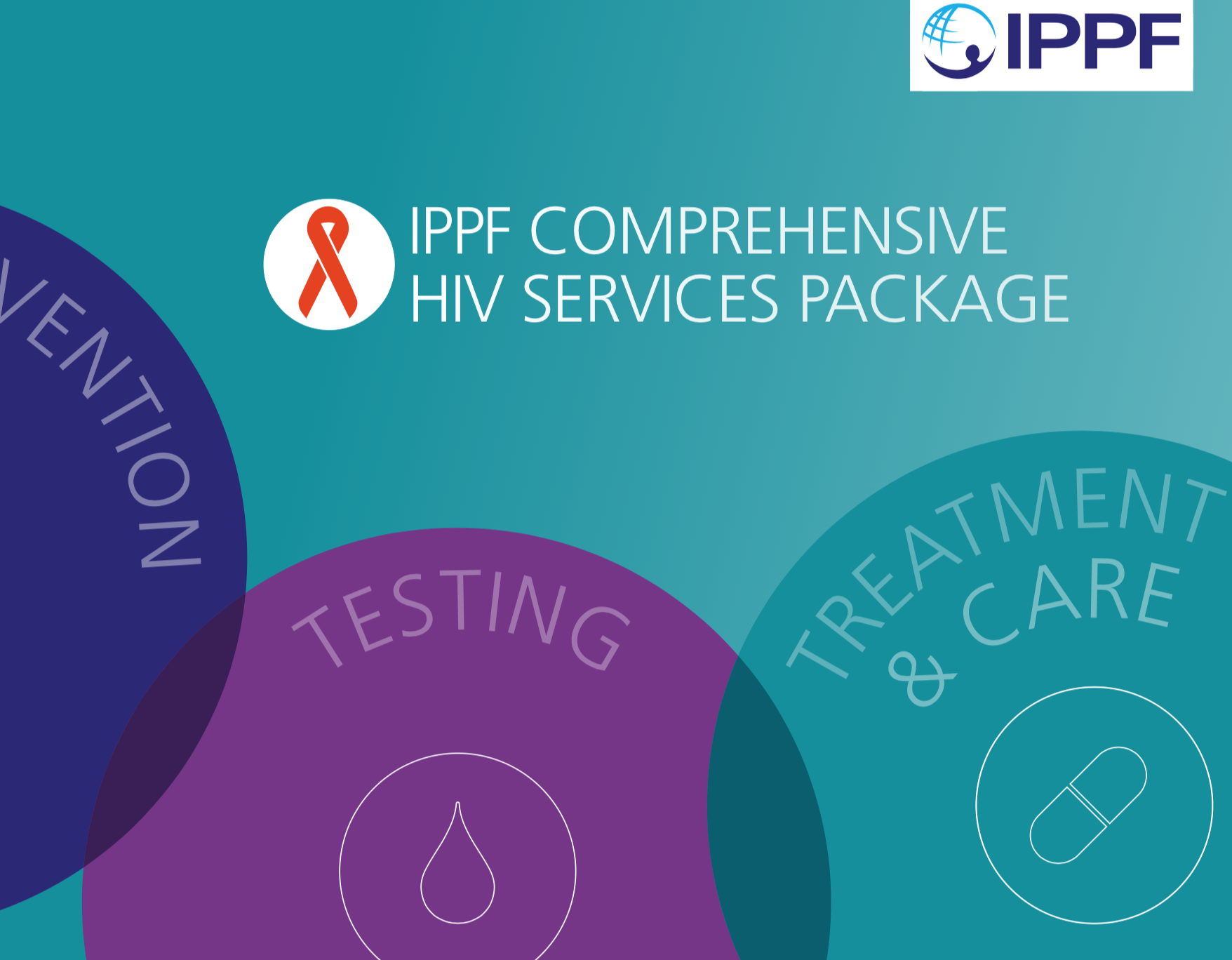Background
IPPF offers a comprehensive approach to sexual and reproductive health and rights through its Integrated Package of Essential Services (IPES) which is offered at affiliate service delivery points. The IPES includes HIV testing, HIV prevention, HIV care and treatment, services for sexually transmitted infections and reproductive tract infections, contraception, abortion care, obstetrics and gynaecology, fertility support, and support for sexual and gender-based violence
Purpose
The purpose of our HIV Theory of Change is to clarify the goals and vision of IPPF’s HIV programme and to articulate the different pathways and strategies IPPF uses to contribute towards its HIV goals and vision. This Theory of Change endeavours to represent a conceptual model that is complex and non-linear in the format of a readable diagram. Therefore, this Theory of Change diagram is a simplified representation of a complex process which cannot be fully captured in this format. Our Theory of Change describes causal pathways for how the work in our HIV programme contributes to the ultimate goals and vision. The purpose of this conceptual model is not to provide a detailed description of the components of our HIV services, as these are described in the 2020 ‘IPPF Comprehensive HIV Services Package’ and the IPPF 2022 ‘Client-centred-clinical guidelines for sexual and reproductive health care’.
Reading the diagram
Our Theory of Change diagram is read from left to right, representing movement in time from the world we currently live in (left side) towards the future we would like to see, which is represented by our vision (right side). There are 7 pathways (page 1), each with a set of strategies (shown on pages 4 and 5 as close-ups of the diagram), whose work contributes towards achieving our HIV goals and vision. The 7 pathways are divided into cross-cutting pathways (community engagement, evidence and learning, capacity strengthening and sharing, strategic partnership building) and core pathways (advocacy, empowerment, comprehensive service delivery). The cross-cutting pathways are iterative and intersecting, contributing to each other and collectively contributing to the 3 core pathways. The core pathways represent the 3 main areas of our HIV programme, which, like all elements of the diagram, also interact with each other synergistically. The strategies of all 7 pathways working together contribute towards a set of outcomes. The outcomes interacting together contribute towards our goals, which in turn interact with each other, and contribute towards our ultimate vision.
when
Subject
HIV and STIs

HIV Theory of Change Diagram
IPPFThe below images provide close-ups of IPPF's specific strategies for its cross cutting and core pathways.
Scroll down to download the full HIV Theory of Change.

Close up of Cross-Cutting Pathways
IPPF
Close-up of Core Pathways
IPPFInequalities drive the HIV pandemic
Key to an impactful HIV programme is understanding and addressing drivers of the HIV pandemic, including structural barriers; violence against women; discrimination; stigma; harmful social norms; inequalities related to sex, gender, sexual orientation, race, disability, and economic status; criminalization of HIV transmission and certain populations; and restrictive laws and policies. Due to social and biological vulnerabilities, certain groups of people experience higher incidence rates of HIV including women and girls; gay, bisexual, and other men who have sex with men; sex workers and their clients; people who inject drugs; trans people; and people in prisons. Working with community stakeholders affected by and living with HIV to design, implement, and evaluate IPPF services and programmes is essential to successfully contribute to our stated goals and vision and meet the needs of communities.
A community-led, inclusive response
Working with community stakeholders affected by and living with HIV includes both tailoring services and programmes to address the needs of populations more severely affected by HIV, as well as addressing the needs of all people who would benefit from HIV‑related services such as youth, people with disabilities, pregnant women and infants, people in discordant sexual relationships, boys and men, and others who may not identify as a member of certain groups. Of key importance is creating programmes, services, and spaces that are inclusive, discrimination-free, and accessible to all, where each person feels welcomed and that their health and well‑being needs will be at the centre of the care that they receive.
A note about IPPF HIV clinical services
IPPF’s comprehensive approach to sexual and reproductive health is an integrated service package which includes HIV testing, prevention, and care and treatment, as well as prevention, diagnosis, and treatment of sexually transmitted infections (STIs) among other sexual and reproductive health services. Integration of services means that a comprehensive set of sexual and reproductive health services is available within one location (according to local availability), and that the full range of services is offered to users at their visit, no matter their initial reason for the visit.
Services include:
- HIV testing: pre-test information and counselling; HIV diagnostic testing (at the service delivery point or via self-testing); post-test information and counselling; management of those with a positive result, including linkage to care and treatment and voluntary partner notification.
- HIV prevention: a sex and pleasure positive approach to risk reduction counselling; condoms and compatible lubricants; voluntary medical male circumcision; antiretroviral (ARV)-based prevention, including emergency HIV prevention medication (post-exposure prophylaxis—PEP), pre-exposure prophylaxis (PrEP) methods such as oral, vaginal ring, injectable, and other methods as they become available, prevention of vertical transmission for infants; screening for sexual and gender-based violence; harm reduction for people who inject drugs; screening, diagnosis and treatment for STIs and other infections.
- HIV care and treatment for people living with HIV: counselling and supportive interventions; antiretroviral therapy (ART), including for the prevention of vertical transmission of HIV; CD4 count and viral load testing; assessment and management of common co-infections and comorbidities.
- In humanitarian settings, the Minimum Initial Service Package (MISP) for Sexual and Reproductive Health.














